
Words matter and in the case of Frogner Park and The Vigeland Installation, it is apparently very important how we refer to them. So, let me begin by trying to explain what it is exactly I’m talking about. In Oslo, Norway there is a large public park, Frogner Park. Within this park is one of the world’s most famous sculpture parks – and the world’s largest designed by a single artist – the Vigeland Installation. The authorities are sensitive to this because everyone, including some guidebooks, simply refer to the entire area as Vigeland Park or some such bastardization. Not wanting to anger an entire city (again) I wanted to make sure that I started this post off on the right foot and now that I have, I think it’s important to explain why the park is actually a great place to visit and not nearly as boring as it at first sounds.

I’m not an art guy, but as soon as I saw the photo of the park’s most famous sculpture in the Fodor’s guidebook I had on hand, the “Angry Boy,” I knew I had to visit and see that, plus the 211 other works of art for myself. I visited in March, just as the seasons were in transition from bitterly cold to kind-of-sunny and not as cold. Caught in between, the weather was mostly fine if not a little grey and damp, and so it was in a soggy park that I found myself with a tour guide one somewhat sunny afternoon in Oslo. While many parts of the city are easy enough to visit without a guide, Frogner Park is a place where you absolutely need some help. No guidebook will go into the detail necessary to really understand the entirety of the sculptures and there’s not much information about the installation at the park itself. Guides are easy to find and if you just hire one for a few hours, the cost will be manageable and you’ll discover that you will get much more out of the experience than you would going alone.
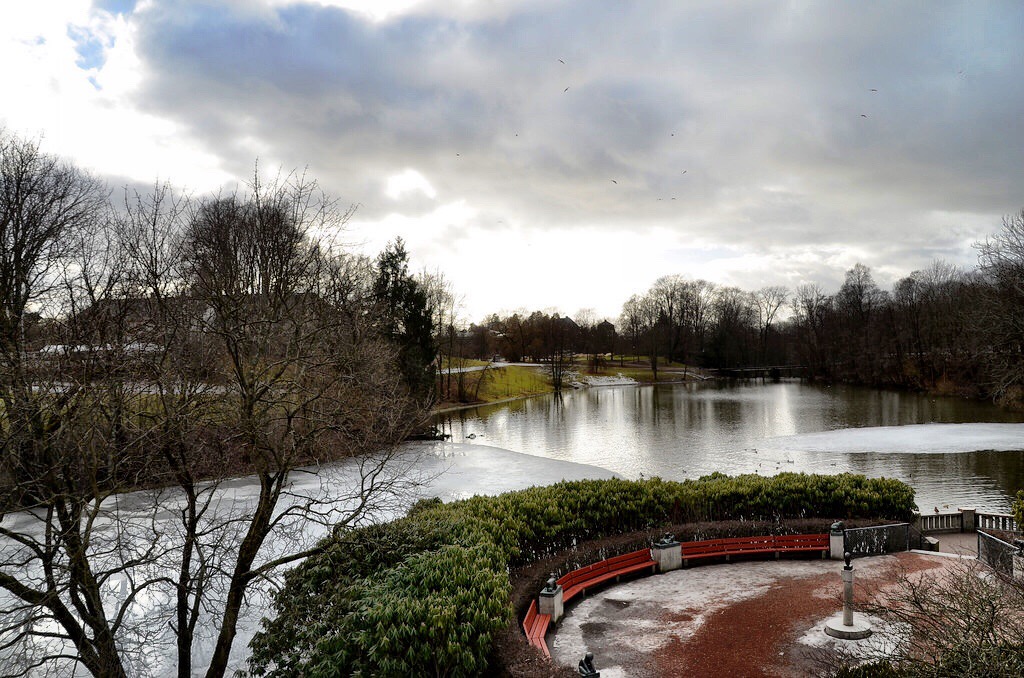
Gustav Vigeland become known early on in his career as a great sculptor and following Norway’s independence from Sweden in 1905, quickly became heralded as one of the new country’s top artists. But in 1921 he ran into a problem. Living in an old abandoned workshop in Oslo, the city decided that it would be best to demolish the house and build a new library on the land. Naturally Vigeland wasn’t fond of the idea and so a dispute erupted, but that dispute created one of the most unusual patron-artist relationships the world has ever seen. Vigeland was granted a new building from the city where he could work and live and in exchange, he promised to donate all of his resulting works to the city. That new house was next to Frogner Park, where Vigeland planned a massive fountain and over twenty years, he devoted himself to the creation of an open exhibition of his works, what eventually became known as the Vigeland Installation and which includes 212 bronze and granite sculptures, culminating in the famous Monolith – 121 figures struggling to reach the top of the sculpture.
Covering a space of 80 acres, I didn’t have time to see all of Vigeland’s works, but thankfully many of them are located close to each other, making an hour-long tour possible and easy to manage. Almost immediately though I could tell that Vigeland wasn’t your standard artist and these works of art were as different as anything else I’d seen before. The sculptures follow a general theme of the human condition and in them Vigeland portrays men, women and children in a variety of different situations and at different ages, chronicling how all interact with each other. Some are abstract in their meanings, where many others strike a chord thanks to their primal nature. What’s most amazing to me is that Vigeland completed all of these works of art by himself, without the help of students or other artists. The amount of work required is almost too much to imagine, making the achievement that much more impressive.



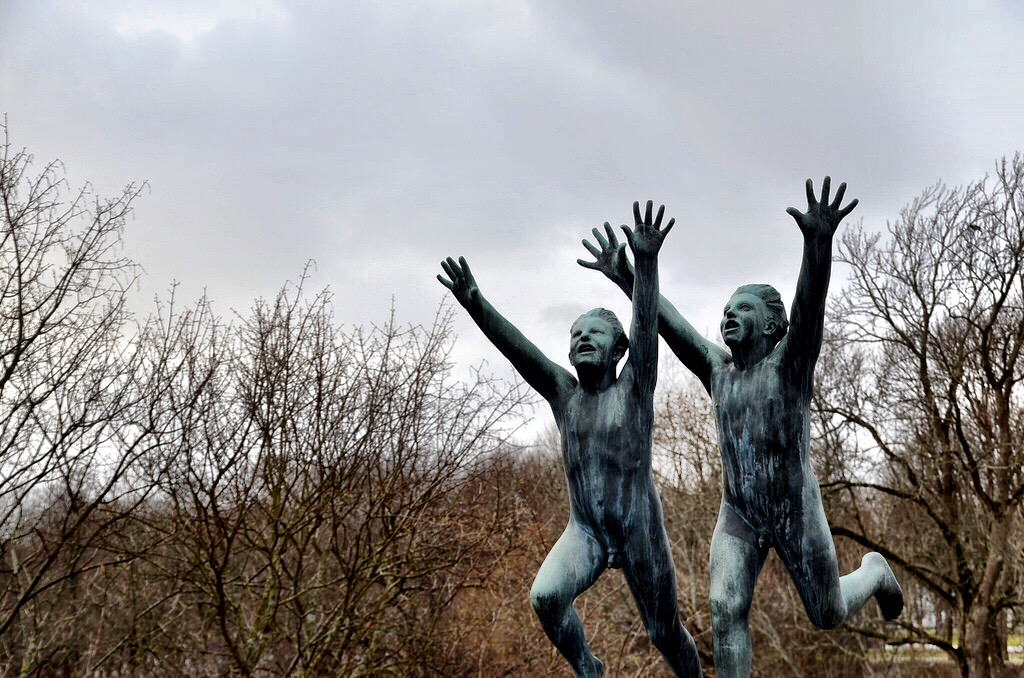

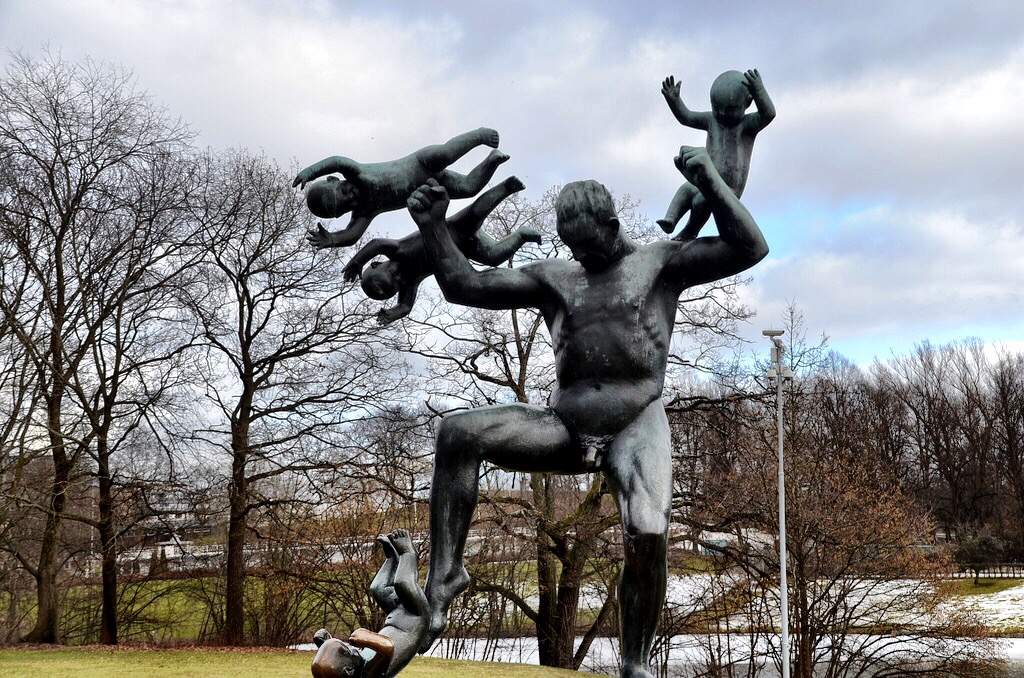
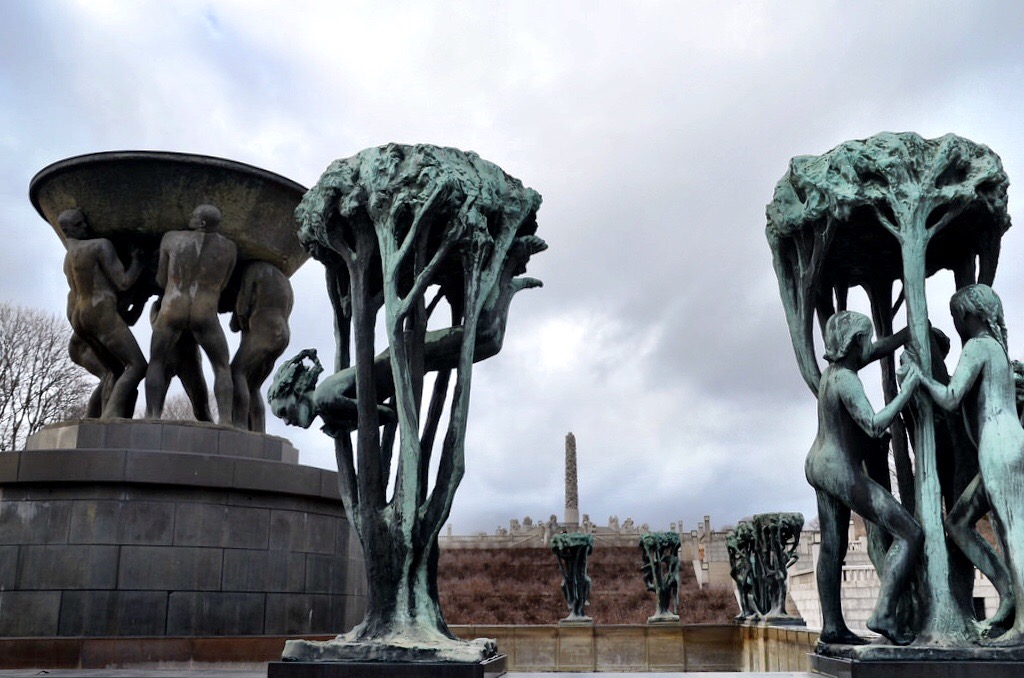


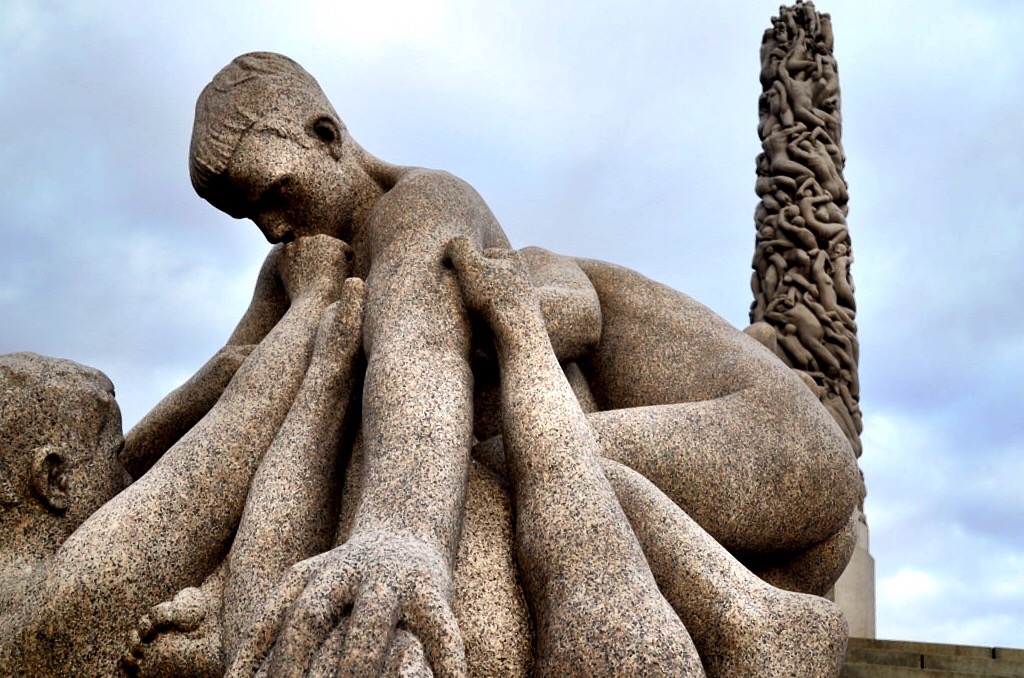
At the heart of the installation is the massive piece known as The Monolith. Crafted from one giant piece of granite, this 14 meter tall structure features 121 figures all trying to reach the top. Experts say that it symbolizes man’s desire to become closer with the divine and it shares a certain human bond as the figures embrace one another. I just thought it was pretty and offered a great view of the surrounding park; but then again I’m not an art expert.
The park is much more than just the artwork of course and even on a slightly damp day in March, I could see gardeners preparing the grounds for the beautiful display of spring flowers that would soon be in place. My guide said that during the summer, hundreds of people visit the park every day to grill out on their small Weber grills and just enjoy spending some time with friends and family. The setting in amongst hundreds of sculptures decrying the human condition seems a little odd, but strangely enough I think Vigeland would approve.
Regardless of your interest in art – mine is very limited – Frogner Park and the Vigeland Installation are both important places to visit in Oslo. They’re important not just for the cultural experience, but because a major piece to understanding life in Oslo is understanding how connected people are to nature, and there’s perhaps no better place to experience that than in Frogner Park.
Have you been to Oslo? What did you think?
